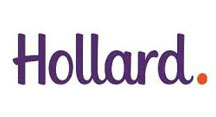Workplace safety should be a key business priority.
After all, you never know when emergencies can strike. Accidents and unpleasant events can occur on any given day, especially if you are not serious about preventing them.
Workplace accidents harm the people around you and can also shatter your reputation and financial stability.
Your employees will have peace of mind, and give their best, knowing that their work environment is safe. It can help lead to a healthy work environment.
Why take a chance with your workplace safety?
Reinforce workplace safety now with the workplace safety tips below.
Providing Protective Gear:
If your business involves manufacturing, warehousing or the use of tools, provide your employees with protective gear like helmets and gloves.
Personal Protective Equipment, offers protection against falling debris, wet floors, electrical sparks and harmful gases. For instance, wearing hard hats can help protect your employees against head injuries from falling objects.
Essential protective gear includes safety footwear, helmets, eye protection, high visibility clothing and respiratory protective equipment like a mask.
While your equipment operators typically should be provided with their own personal protection equipment, you should also provide safety gear to other staff and visitors as they enter the areas of manufacturing, storage or building sites.
Installing Safety Signs:
Installing safety signs is an important safety precaution you should observe in your workplace.
If your floors are wet, safety signs reading SLIPPERY FLOORS can be placed in the area so that people are careful while crossing the area. Safety cones can also be used to prevent entry to an area. Similarly, a sign reading Lift is Out of Order can be placed near the defunct lift. Signage that advises to Hold handrails on stairs can be used on the stairwell walls to remind staff and visitors to take care. Emergency exit doors signs should be clearly visible, even if there is smoke.
Educating Employees on Workplace Safety:
Workplace safety training is essential for staff, to create awareness and minimise the risks of slipping, tripping, electrical shocks and other common workplace accidents.
Workplace safety training helps you maintain a safe and healthy work environment for your people. Besides, it helps your team identify safety hazards so they can avoid them. It builds awareness of the right safety practices and expectations.
Keeping Your Workplace Clean:
A clean, hygienic and tidy workplace can improve job satisfaction, productivity, performance and the health of your people and visitors.
Illness and injuries can be minimized by having a clean, safe workplace.
Avoid debris and dust in your workplace, or sites, as it can put your workers at risk of injury and illness.
Keeping a clean workplace is important for employers to minimize workers compensation claims caused by illness and injury.
In a messy work environment, an employee is less likely to notice a hazard, increasing the risk of an accident.
A build-up of lint, pollen and dust can lead to breathing hazards, causing asthma attacks and other health issues. The debris from furniture, cables and building materials can cause tripping when someone inadvertently walks through them. Cluttered spaces can also be more vulnerable to fire breakouts.
That’s why it is important to keep your workplace clean and clutter-free.
Opting for the Insurance for Workplace Injuries and Damages:
Insurance should be your last form of defence when it comes to workplace safety. It can provide peace of mind that you have financial protection if something goes wrong.
Here are some important insurance covers to financially protect your employees, visitors and business against workplace accidents.
- Workers Compensation:
Workers compensation covers the employees against workplace injuries or illness at or due to their work. It can cover their expenses while they are absent from work due to illness as well as medical expenses and rehabilitation costs. It is a mandatory insurance for employers across Australia. However, workers compensation schemes vary from state to state.
- Public Liability Insurance:
What if a customer experiences injuries after getting hurt by a falling object at your store? Or a visitor fractures his back after tripping at your manufacturing facility?
They can sue you for damages. Therefore, take out public liability insurance to cover third parties like customers or other visitors not employed by you. This is important for your workplace safety as it covers the risks posed to others. If you don’t have it, ask for a small business public liability insurance quote now.
Creating Emergency Procedures:
Having an emergency plan in place is a smart way of preparing for an emergency. After all, as many people panic when hit by a crisis, it is crucial to prepare your emergency plan in advance.
Your emergency action plan should include all actions you and your employees will take in case of emergencies such as fire, a medical incident or workplace accident.
Your emergency action plan should cover potential emergencies that can hit your workplace. For example, the construction industry has its own risks while the dangers in an electrical shop differ from those faced by plumbers. Therefore, your procedures should be tailored to your workplace.
It is all about what to do and who to report in case of an emergency or accidents at work.
Disclaimer:
*Important: Cover may be available subject to meeting insurers underwriting criteria. Some of the covers listed may or may not be available or may have limitations or exclusions. Cover inclusions vary significantly from insurer to insurer. DO NOT rely upon the above. Check your policy schedule carefully for inclusions and exclusions and limitations. Talk to a business insurance broker for more information.





